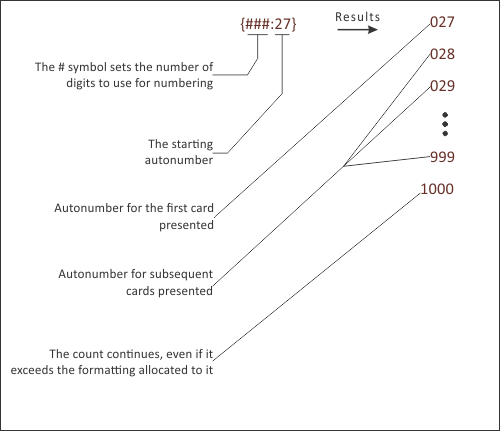

A credential is a type of entity that represents a proximity card, a biometrics template, or a PIN required to gain access to a secured area. A credential can only be assigned to one cardholder at a time.
The credential entity represents a proximity card, a biometrics template, or a PIN. Credentials are used by Security Center to identify who is requesting access through a secured access point. Credentials are really claims of identity. A credential distinguishes one cardholder from another. For access control to be operational, every cardholder must have at least one credential. These are typically (but not exclusively) access control cards.
The required credential depends on the type of reader installed at the door.
Security Center supports a few standard card formats.
For card formats, a card number is always required. Depending on the card format, the facility code might not be necessary. The following table describes the standard card formats supported by Security Center, and the valid ranges for the facility code (also known as Company ID Code) and card number (also known as Card ID Number).
| Card format | Facility code range | Card number range |
|---|---|---|
| Standard 26 bits | 0 to 255 | 0 to 65 535 |
| HID H10306 34 Bits | 0 to 65 535 | 0 to 65 535 |
| HID H10302 37 Bits | Not required1 | 0 to 34 359 738 367 |
| HID H10304 37 Bits | 0 to 65 535 | 0 to 524 287 |
| HID Corporate 1000 35 bits | 0 to 4095 | 0 to 1 048 575 |
| HID Corporate 1000 48 bits | 0 to 4 194 303 | 0 to 8 388 607 |
| CSN 32 bits | Not required | 0 to FFFFFFFF |
| FASC-N 75 bits2 | - | - |
| FASC-N 200 bits2 | - | - |
1 If HID H10302 37 Bits is the only card format referenced in your CSV file, it is preferable to bind the card number to the Security Center Card data field instead of the Card number field since the facility code is not required. Because a single value is stored in the Credential card data field, no separator character is needed.
Custom card formats are also supported if they are predefined in your system. To learn about creating custom card formats, see the Security Center Administrator Guide.
2 For information on FASC-N 75 bits and FASC-N 200 bits formats, see How credential card formats work with Active Directory in Security Center in the Security Center Administrator Guide.
The Credential prefix sets the name of enrolled credentials. The Credential management task ensures that all enrolled credentials have a unique name by automatically adding a number to the name set in Credential prefix. You can also control the counter by adding an autonumber format (between curly brackets) to the credential prefix.
The credential autonumber format defines the counter style. The autonumber format can be placed anywhere in the credential prefix. Only one autonumber format can be used in the credential prefix at a time.
The autonumber format is explained below.

The following are examples for the autonumber format.
| Credential prefix | Credential sequence generated | Comments |
|---|---|---|
| Credential_ | Credential_0 Crediential_1 Credential_2 |
When the autonumber format is omitted, the autonumber is appended at the end of the prefix and starts at 0. |
| Credential #{##:1} | Credential #01 Credential #02 Credential #03 |
A basic autonumber for the credential prefix. |
| 1{####:46} 11203162-2 | 10046 11203162-2 10047 11203162-2 10048 11203162-2 |
Enrolled credentials can be autonumbered in Security Center so their names correspond to the serial number printed on the back of a series of cards. |
When using PIN as a credential, you can use it either with a card (Card and PIN) or on its own (Card or PIN). Your reader capabilities and configuration determine how the PIN is required.
If you plan to use your readers in a Card or PIN mode, ensure that the PINs are unique for all cardholders and that there are no duplicates in the system. Duplicate PINs may lead to confusion as there is no way to determine which cardholder it belongs to when a user type it in at the door.
In Security Center 5.8 or later, any credential reads that do not match a native card format or a custom card format will be recognized and displayed as Raw [n] bits, where [n] is the bit length of the card.